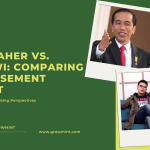
Artificial Intelligence (AI) has been a game-changer across numerous industries, and the advertising sector is no exception. The integration of AI into advertising has led to significant advancements in the way advertisers reach, engage, and influence their target audiences. From improving ad personalization and targeting to optimizing ad spend and measuring ROI, AI is reshaping the advertising landscape and providing businesses with valuable insights and tools to enhance their marketing efforts. In this comprehensive guide, we will explore the transformative power of AI in advertising, its various applications, the positive impact it has on the industry, and how businesses can harness its potential for success.
Artificial Intelligence (AI) is the simulation of human intelligence in machines, allowing them to perform tasks that typically require human intellect. AI systems can learn from historical data, make predictions, and improve their performance over time. In advertising, AI uses historical data to analyze past experiences and make smarter, more informed decisions in the future. This powerful technology enables advertisers to create more personalized ads, target the right audiences, and make faster, data-driven decisions, ultimately driving better results for their campaigns.
Machine Learning: The Backbone of AI in Advertising
At the core of AI lies machine learning, a subset of AI that enables computers to learn from data and improve their performance without explicit programming. Machine learning algorithms analyze vast amounts of data, identify patterns, and make predictions based on past experiences. This ability to learn and adapt makes machine learning an essential component of AI-driven advertising solutions, allowing marketers to optimize their campaigns and achieve better results.
Big Data and Analytics: Fueling AI-powered Advertising
The rise of digital media has led to an explosion of data, providing advertisers with a wealth of information to better understand their audiences and measure the effectiveness of their campaigns. However, sifting through this vast amount of data and extracting valuable insights can be a daunting task for advertisers. This is where AI comes into play, using advanced analytics and machine learning algorithms to process and analyze large volumes of data quickly and efficiently, helping marketers make data-driven decisions and optimize their campaigns.
The Impact of AI on Advertising: Key Applications and Benefits
AI is revolutionizing the advertising industry in numerous ways, from optimizing ad performance and budget allocation to creating more personalized and engaging ads. Let’s take a closer look at some of the key applications and benefits of AI in advertising.
Ad Buying and Placement
AI plays a crucial role in the automated buying and selling of digital ad space through programmatic advertising. This technology uses AI algorithms to manage real-time ad buying, selling, and placement across various digital platforms, including social media, third-party ad exchanges, and programmatic platforms. By automating the ad buying process, AI-driven programmatic advertising allows marketers to target the right audiences, serve relevant ads, and optimize their ad spend.
Performance Optimization and Budget Allocation
One of the most significant advantages of AI in advertising is its ability to optimize ad performance and allocate advertising budgets smartly. Machine learning algorithms can analyze ad performance across different platforms, offer recommendations for improvement, and even automate actions based on best practices. In more advanced cases, AI can automatically manage ad performance and spend optimization, making data-driven decisions to reach advertising KPIs and recommending optimized budgets.
Audience Segmentation and Targeting
Proper audience segmentation and targeting are crucial for the success of any advertising campaign. AI-powered tools can analyze past audience data and ad performance, weigh this information against campaign KPIs and real-time performance data, and identify new audiences likely to engage with the brand. By delivering more relevant and targeted ads, advertisers can achieve higher engagement rates and more conversions.
Ad Creation and Management
AI is transforming the way ads are created and managed. Natural language processing (NLP) and natural language generation (NLG) technologies enable AI-powered tools to streamline the ad copy creation process or even fully create ads based on data insights. This level of automation allows advertisers to produce ad copy that performs as well or better than human-written copy while saving time and resources. Additionally, AI can analyze data to predict ad performance before launching campaigns, ensuring that ads have a higher probability of success.
Personalization and Customer Experience
Personalized ads resonate more with consumers, leading to better engagement and higher conversion rates. AI can help advertisers create highly personalized ads by analyzing vast amounts of data, identifying patterns, and making predictions based on past experiences. This enables advertisers to deliver more relevant and engaging ads that cater to individual consumers’ preferences and needs, resulting in a better customer experience and improved ROI.
Improved Decision-Making
AI-driven analytics provide advertisers with valuable insights and data-driven recommendations to make better advertising decisions. By analyzing campaign performance, identifying trends, and predicting future outcomes, AI-powered tools enable marketers to optimize their campaigns, allocate resources more efficiently, and make informed decisions that drive better results.
Enhanced ROI Measurement
Measuring the return on investment (ROI) of advertising campaigns has always been a challenge for marketers. AI can help improve ROI measurement by providing real-time data and insights, making it easier to assess campaign performance and allocate resources more effectively. By leveraging AI, advertisers can optimize their campaigns, reduce advertising waste, and increase ROI.
Reducing Advertising Bias
AI can help mitigate advertising bias by analyzing data and making objective decisions based on historical trends and patterns. By eliminating human biases and focusing on data-driven insights, AI-driven advertising solutions can create more inclusive and effective campaigns that resonate with a diverse audience.
Adapting to Changing Customer Behaviors
AI can quickly adapt to changing customer behaviors, ensuring that advertising campaigns remain relevant and effective. By continuously analyzing data and adjusting strategies based on new insights, AI-powered advertising solutions can help businesses stay ahead of the competition and respond to evolving market trends.
Overcoming Challenges and Embracing the Future of AI in Advertising
Despite its numerous benefits, AI in advertising is not without challenges. Advertisers must address issues such as advertising bias, data privacy, data quality, and training time to fully harness the potential of AI in their marketing efforts. By overcoming these challenges and staying informed about the latest trends and developments in AI, businesses can leverage this powerful technology to transform their advertising strategies and achieve better results.
As AI continues to evolve and reshape the advertising landscape, businesses that embrace this technology will have a competitive edge. By harnessing the power of AI, advertisers can create more personalized, engaging, and effective campaigns that drive better results and improve the overall customer experience. The future of advertising is undoubtedly powered by AI, and those who embrace it will be well-positioned to succeed in this rapidly changing industry.
Note:
We also tried illustrated this note using AI tools with prompt:
An awe-inspiring advertisement showcasing the capabilities of artificial intelligence, with a futuristic workplace where AI-powered assistants collaborate with human employees. Create an image of a professional setting where an AI assistant and a human worker exchange ideas, sharing a virtual whiteboard and brainstorming together, symbolizing the synergy between human creativity and AI capabilities, illuminated by neon lights and holographic projections, conveying a sense of technological advancement and innovation, a hyperrealistic rendering with precise attention to details, 3D artwork, –ar 16:9 –v 5




